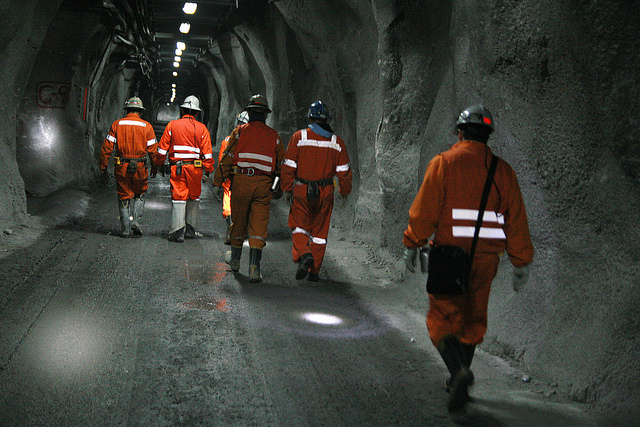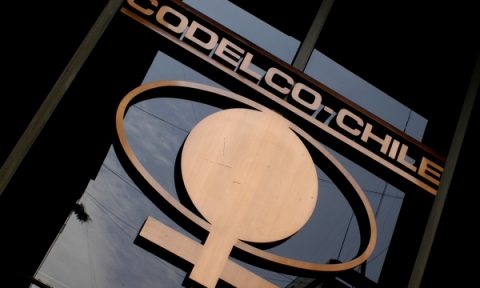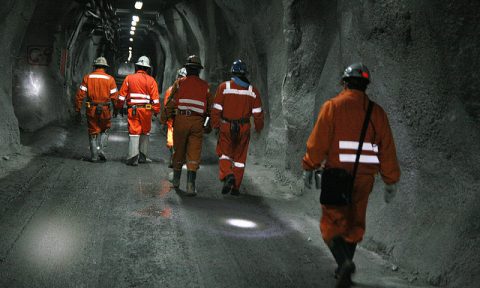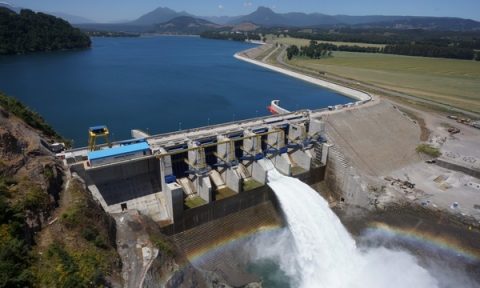The period of transition living the mining industry

The industry is waiting to give the definitions on relevant issues as energy and tax reform. So come this year unlikely to be a revival of the portfolio of U.S. $ 40 billion, which is being evaluated by the companies.
A strong period of uncertainty is facing the mining industry. The local situation, with the changes in energy that wants to implement government of President Bachelet and expectations of higher power consumption than the sector will by the end of the decade had large mining expectantly.
Concern has been expressed in the industry, and so said this week Antofagasta Minerals CEO Diego Hernandez. “The mining industry is in a transition phase, with a new market environment and Chile in a period of great changes,” said the executive, during an exhibition at the College of Engineering.
The Executive Director of Cesco, Juan Carlos Guajardo, share the diagnosis and says the industry is going through a phase of deterioration of the competitiveness that “Chile has been particularly visible in some variables such as labor productivity and costs of critical inputs as energy”.
Joaquín Villarino, CEO of the Mining Council, explains that the last period of “super cycle” of copper between 2004 and 2012 – changed the scenario. “There is a situation of long term prices lower than those of recent years, accompanied by high operating costs, partly because high energy prices and lower ore grades, and a significant gap between wages and productivity”, he says.
Therefore, for large mining companies is not less the signal sent by the government rejecting HidroAysén project. Although the sector had internalized the plants of Endesa and Colbún in the Aysén region would not occur, and although companies were not going to consume that energy-industry estimate that the uncertainty is heightened.
Following the decision of the Committee of Ministers, the first reaction of the Mining Council was noted that “it is essential and urgent” promote the development of other based energy projects-such as coal and hydro-, in order to provide reliable electricity and economical. Today energy represents up to 20% of the costs of mining companies.
Guajardo said that although “the management that the State has given to HidroAysén has been erratic and has far exceeded the current-or rather institutional framework, has revealed all its shortcomings-in this case at least it acted through the Committee of Ministers, which represents a clear sign of action in the institutional framework”.
He add that, anyway, the country’s energy situation was already critical without HidroAysén and the option is to develop other sources of fast and reliable way. “To some extent, ‘deshidroaysenizar’ energy discussion can help a more viable energy agenda”, he says.
Hernández warns that the situation is a complex one. “Lack of energy projects affects mining by their competitiveness due to rising prices (…) There is an Energy Agenda that the government has released and now we have to go to the Action Plan, so this can make it a reality, “he said in his presentation to the engineers.
The uncertainty is such that even this week a transverse group of businessmen, politicians, workers and NGO representatives presented their proposal to the government about mining policy to achieve an industry that is “virtuous, sustainable and inclusive”. The design of this lasted a year.
High consumption
The mining sector consumes 33% of the national energy demand above-industry, which occupies 28% and households 16% – and that consumption is expected to rise to a peak of 38% in 2019 . Towards 2025, the industry is projecting an increase of almost 100% in electricity consumption (see graphic), due to structural factors faced by the mining.
One is the law that will lower copper ore. For 2020 grading 0.57%, far averaging 0.86% in 2012 and 1.29% in 2000. This lower grade will have a 50% general impact on overall fuel consumption is projected point industry. To this we must add an additional 50% increase in unit electricity consumption by 2020 concentrated in plants. This is due to the greater depth at which the mineral is located by its lower grade. Finally, there is also an increased consumption of oil to transport the ore to the plants.
From the industry explained that another factor is having the hardest rock, generating costs for conversion into copper concentrate. For this phenomenon, between 2000 and 2012 an increase of 18% in electricity consumption for crushing and grinding the same amount of mineral was recorded, and now it can rise again, indicating industry executives.
This explains the need for mining to find power contracts at competitive prices. The point is sensitive, since in the last negotiation processes this goal has not been achieved, causing some companies have to boost power initiatives, such as Antofagasta Minerals with Alto Maipo and the Arrayán wind farm, which will be opened in August.
The sector’s diagnosis is that contracts of values passed $ 90 a megawatt-hour (MWh) to U.S. $ 130 MWh, which makes mining projects lose profitability. “This price increase has an impact on the rates assumed by the final customers and today, to pay that amount, equals a higher cost of U.S. $ 2 billion a year for the industry”, said Hernandez.
The values are higher than those they can get mining companies in neighboring countries. “In Peru, the long-term contracts are denominated securities to $ 40 per MWh, and in U.S.A. even reaches U.S. $ 15 per MWh,” says a senior executive of the sector. So, he says, companies are not investing in new projects in Chile. “The only people who are making investments in the country are Antofagasta Minerals and Codelco. The rest still evaluating their portfolios”, he adds.
In this situation of lower investment, Gustavo Lagos, academician from the Catholic University, says that the country will not reach the goal of producing over seven million tons by the end of the decade, as estimated. “Chile will have many difficulties to increase production as expected before 2020. That will not happen, if today is all postponed. Most likely not advance Six Million”, he says.
Paralyzed Portfolio
Mining is in standby investments of U.S. $ 40 billion, depending on energy projects, competitive energy prices and clear rules for making the decision to invest.
Villarino highlights a 2012 McKinsey study that already showed that one third of the potential incremental copper production in 2020 was associated with mining projects that would not be profitable at a copper price of long-term $ 2.75 per pound, except that a significant cost reduction was achieved.
The consensus in the industry, according to a senior executive, is that initiatives will not advance this year. Ratifies Lagos: “I see difficult that there is a revival of mining investment in Chile this year, due to the energy issue and because wage costs are higher”.
The focus of companies, indicates another executive, will be on improving productivity indicators. This process, he explains, it brings also talks with the workers to analyze contract terms, could take all this year.
Other definitions that are waiting, are changes in the tax formula which is being discussed in Congress. “Tax reform can have a major impact on the sector. It is more important than the energy issue, but adds to the uncertainty”, says Lagos.
He add the amounts reinvested in mining, from 2006 to date, totaling nearly $ 25,000 million. According to the academic, 55% of these private investments have been reinvested. “That has been given by the mining legislation. That may change”, he concludes.
Source: La Tercera











